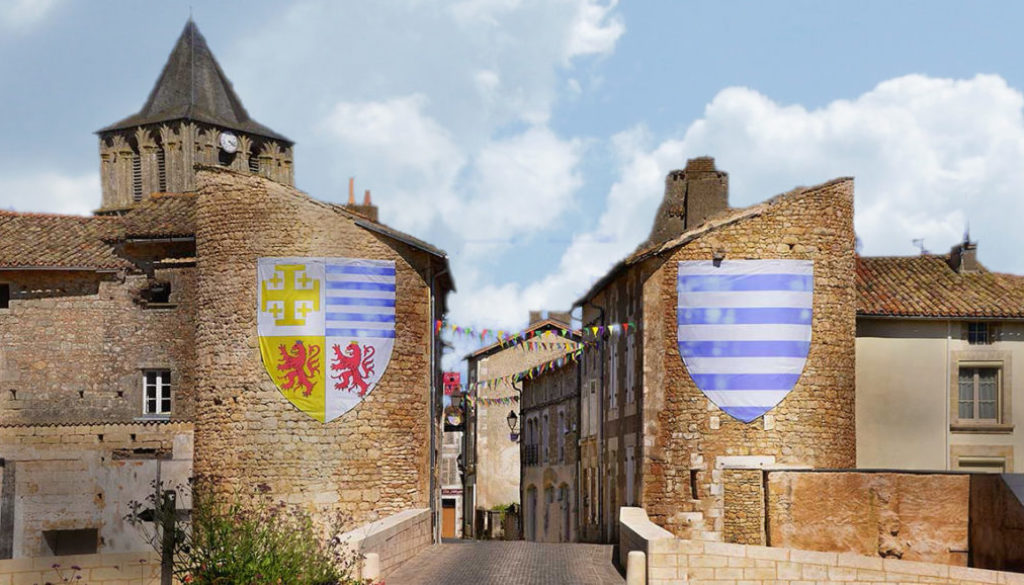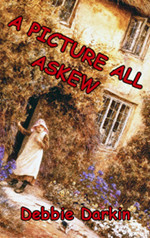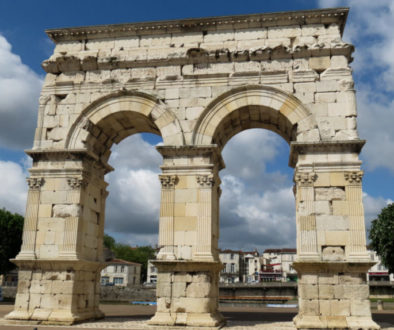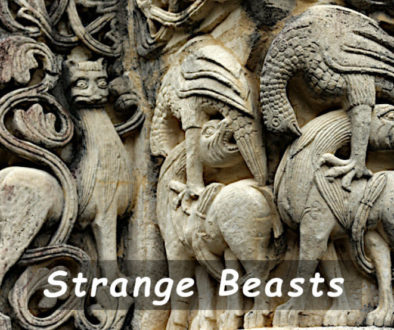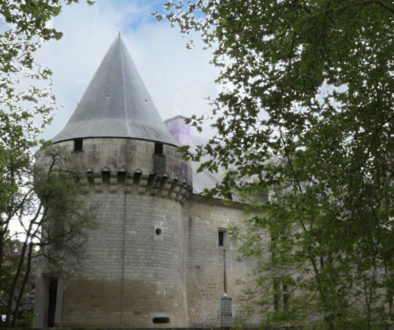LUSIGNAN
8TH May 2018:
We happened upon Lusignan by accident. If I had not spotted the brown road sign, saying ‘Lusignan, medieval city, .25 klm’ we would have missed this treasure of French History.
ON THE WAY TO SAINT SAVINIEN
In the morning, saying our goodbyes to Brion Les Thouet, we were offered sandwiches to take on our journey to our next stop. We thanked Yvonne and explained that we were not going very far at all – in fact, only about two hours down the direct road. (Only of course, it would take us longer as we would instead be meandering on by-roads to have a quick look round interesting places like nearby Loudun. I’d first spotted it on Google images – a fairytale chateau sitting in a lake, still reached by its drawbridge.)
POTTERING IN POITIERS
From there it was a short ride into Poitiers, visited just for a morning once before, and remembered as ‘a place to go back to’.
We did so, but entering from a different direction we found it difficult to orientate ourselves. Also, to find suitable parking anywhere near the centre. There seemed little point in getting my scooter out. Instead, I used my stick and we took a short walk, but found little of interest in that area. It was too early for lunch, so we decided to continue our journey along the country road D611, which would pass la Fontaine de La Comte before rejoining the A10 highway to St Jean d’Angèly.
WE DEVIATE –DISCOVER MEDIEVAL LUSIGNAN
Luckily I spotted a brown sign indicating a short detour to the nearby ‘Mediaeval City of Lusignan’.
‘We have plenty of time,’ I said to Graham, ‘and it must be important for the sign to point down such a narrow road.’
He readily agreed, and we soon found ourselves in a small town full of interest. Not least the ruined castle, high on a nearby hill, and built in the 11th century. It was decided I shouldn’t attempt to reach it on my motor scooter; in any case, Graham argued that he doubted there was enough time. But I was able to read a bit about it. Its most famous resident was Guy de Lusignan, who on the second crusade became King of Jerusalem through marrying Sybilla, daughter of the leprous King Baldwyn.
Many were the adventures Guy had, and there is evidence of a film ‘Kingdom of Heaven’ about him. It is not Ridley Scott’s best – and it would appear to be not altogether historically accurate. In any case, it is worth looking Guy de Lusignan up – I suggest the very short (but accurate) account in Encyclopaedia Britannica (where it states he was born in 1129 – not 1150, as in some accounts).
This castle was the favourite of the Duc de Berry, and you can see it illustrated (as it was in his time) in his famous Book of Hours.
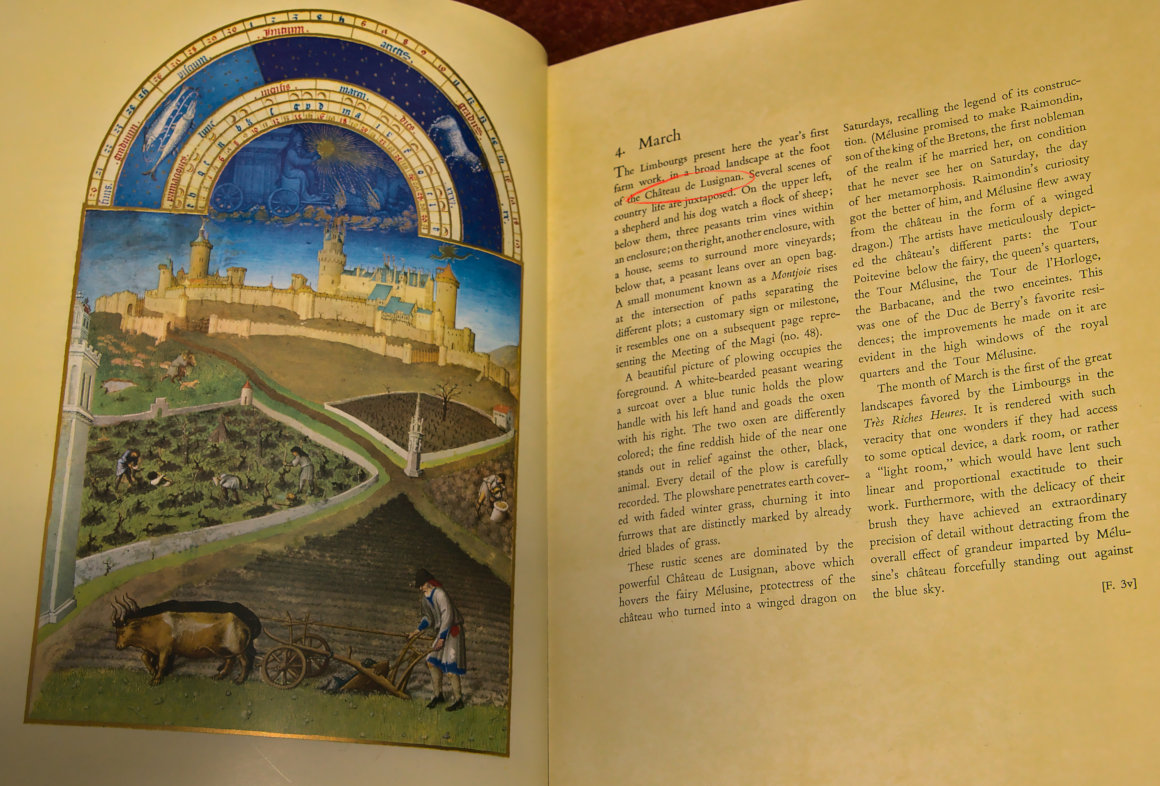
THE TALL TOWERS – SOLE SURVIVORS
Nowadays there is little to be seen of it in this modest small town. The most striking survivors are the considerable bases of what must have once been two very tall towers guarding the gated entrance to the once-proud and important city.
You will find them in the Duc de Berry’s illustrations. Even today they dominate the main square of the town, where we parked. See them in the Feature Photo at the beginning of this post.
ENTER THE OLD CITY OVER THE ‘DRAWBRIDGE’
They still bear two shields of the House of Lusignan, founded in the 9th century. To pass through this ‘gateway’ into the old city you have to walk ‘over the drawbridge’, although the moat is filled in.
There are considerable stretches of the old city wall still intact, and a lot of houses remain as they were in the 14th century – and people still live in them. There is a beautiful roofed Market Place in the centre of the old town, close to the church.
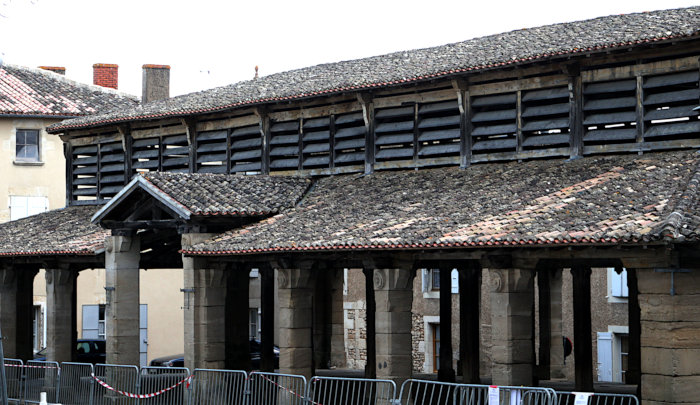
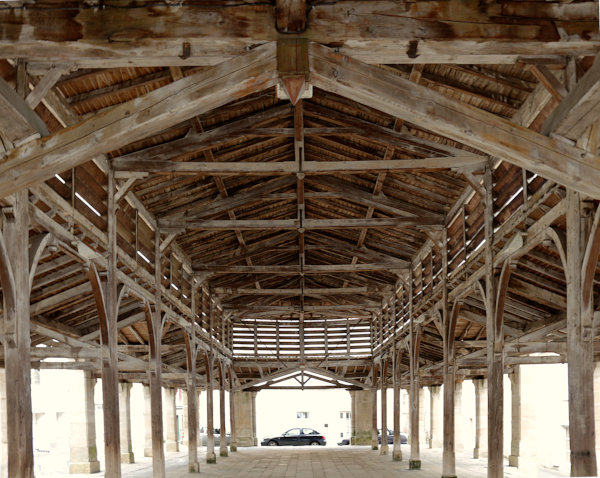
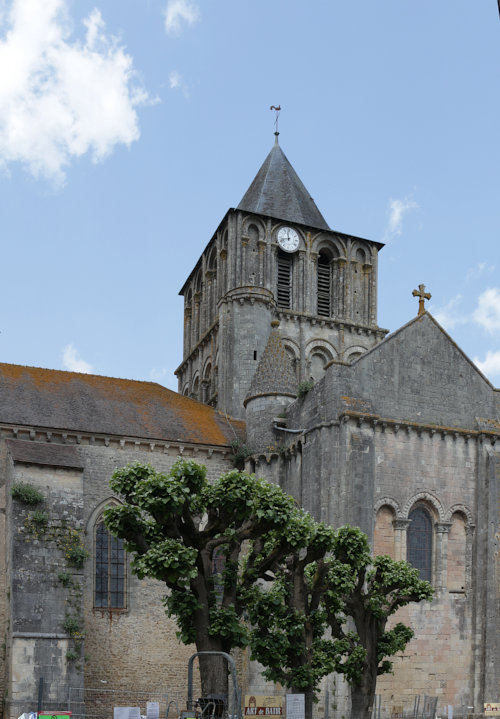
THE ANCIENT CHURCH IN THE OLD CITY OF LUSIGNAN
The ancient church is quite small, and rather plain now, though the very tall pillars and the vaulted roof give it dignity. I found a few interesting plaques. Unable to read French, I struggled to find the names they referred to. Topping some lower pillars were some amusing, if rather primitive depictions of mythical animals. I particularly admired the semicircle of largely unadorned Romanesque arches and pillars that guarded the tiny stone altar. They contained tall, stained-glass windows to illuminate it.
COULD THIS BE THE TOMB OF GUY DE LUSIGNAN?
There was a crumbling effigy on a heavy stone sarcophagus lid; it intrigued me, as it stood in front of a side-chapel dominated by an arrangement of crossed swords – but there was no explanation.
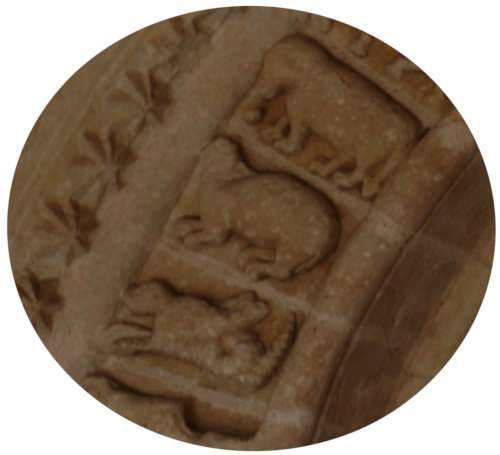
I AM ESCORTED ROUND
An organist had come in and was practising on a small instrument, so I tiptoed around. Presently he climbed down from his stool, and escorted me all over the church. This kind gentleman explained all items of interest, like the place reserved for the minister and his servants to sit – and that for the President.
FINE STATUES – AND THE ‘BESTIARY’
There were a few statues – one was of St Anthony of Padua. The finest was a wooden pieta; the expression on Mary’s face was haunting. My voluntary guide was also anxious to show me the ‘bestiary’; a collection of carvings facing the side door.

MANIPULATING MELUSINE
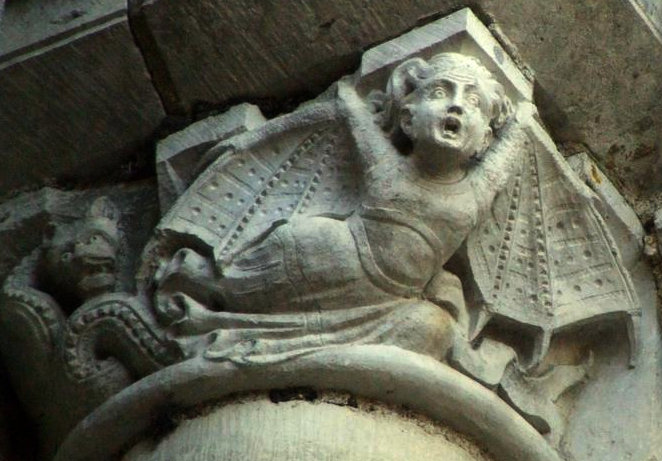
As well as these twisting, primitive, yet strangely sophisticated carvings of allegorical animals, he was keen for me to see their ‘Melusine’. She is traditionally a two-tailed mermaid, but in this case resembled an air sprite, sailing down from her pillar with her mouth wide open. She is said to still fly around the castle wailing whenever a lord or king is about to die – (remember the King of Jerusalem.)
MELUSINE GOT AROUND: FRANCE, ENGLAND CZECHOSLOVAKIA
This is because this well-known creature of legend – half woman, half fish – was said to have founded the two Angevin families. (The ancestors of our English Henry11 and his famously feisty queen -Eleanor of Aquitaine, and their turbulent sons. Were their daughters also turbulent?)
Melusine was also held responsible for this Lusignan dynasty – set in the lands of said Eleanor. Yes: – we were standing in Aquitaine.
LUSIGNAN’S GREAT TREASURE –WOOD TELLS IT’S STORY
My kind guide’s English was faultless. He left me just before I reached what rivetted me – a quite large panel of sculpted wood. It showed the town as it had been in mediaeval times; just before a battle. The castle in the background was intact, of course, and quite impressive. I readily recognised some of the houses that still stand just behind a section of the city wall.
The figure of a knight loomed large just above the centre of the picture – presumably Guy de Lusignan. A few smaller figures were dotted here and there. I cannot find out enough about it.
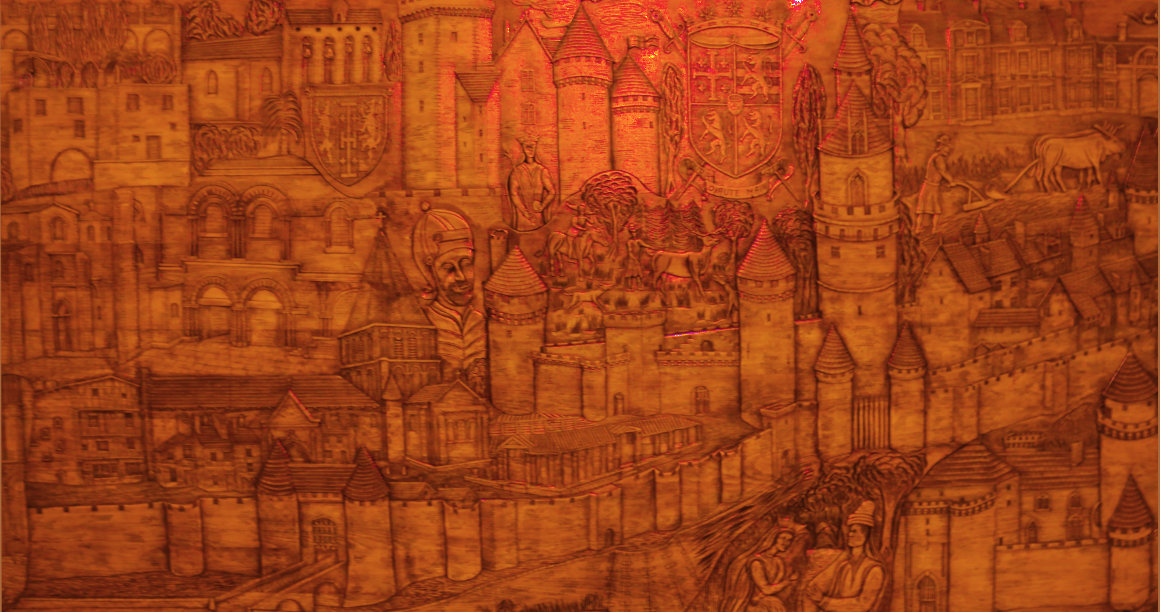
STUDYING THE STORY OF LUSIGNAN IN CARVING
Now I was impatient for Graham to find me. An expert conservationist of all things wooden, I knew he would love this panel with its gleaming patina of centuries.
When he arrived he was full of excitement at having found the medieval covered market hall. The intricate roof timbers had particularly charmed him, and he had taken several photographs. Now he spent a long time admiring and studying the ancient carved wood panel; and of course, took some photographs of that.
I really hope that I can return to Lusignan when we are less hurried; it needs a little time to learn all of the rich history, and the meanings in the symbolism found all over the place there.
Text by – Jackie Usher, SWWJ. (aka author Debbie Darkin, & ‘Graham Liverpool’ on Trip Advisor.)
Photographs by – Graham Usher.
![]()

